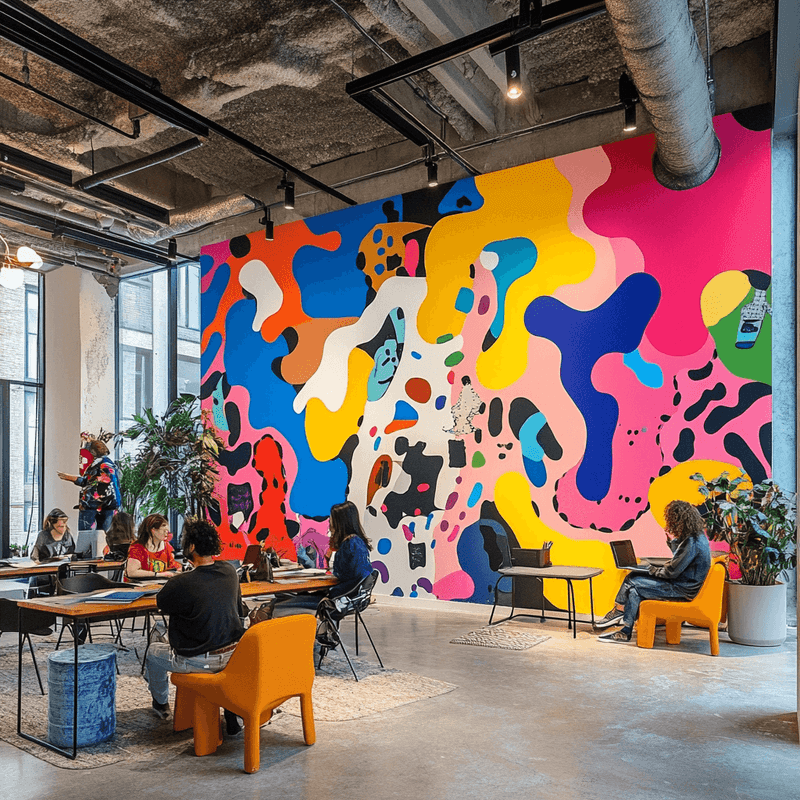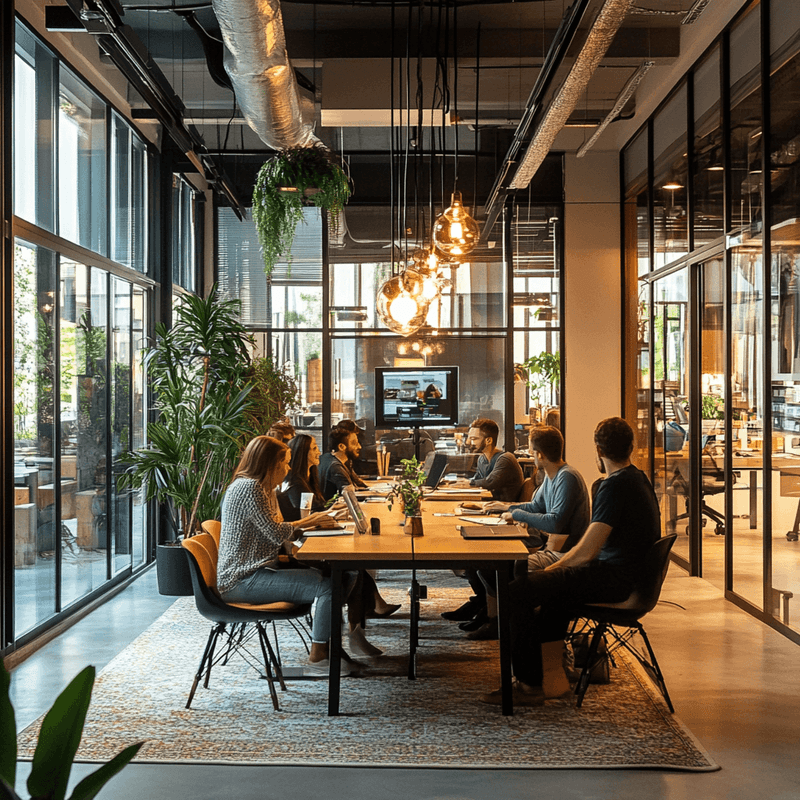
The well-being to work also passes by the lighting! In an individual office as in a coworking space, by creating the perfect balance between natural and artificial light, you will manage to create an atmosphere conducive to concentration and productivity, while protecting your eyes. Our tips for getting the best possible result.
Good lighting for a more efficient workday
A little biology lesson
Working in a poorly lit office has a considerable impact on mental and physical health. Why? The body naturally produces Cortisol, which releases energy from the body's reserves. This hormone is produced in large quantities in the morning and gradually decreases until the evening, being replaced by melatonin, called "sleep hormone". However, blue light, coming from the sun or a screen, stimulates the production of cortisol, and therefore energy!
Whether you are an employer or an employee, it is easy and quick to set up a lighting system that is sufficiently efficient to avoid general fatigue, headaches and a consequent decrease in concentration.
The importance of natural light
As human beings, we naturally need daylight to feel good. It has been scientifically proven that its absence can have harmful effects on the body:
- Sleep disorders ;
- Mood disorders;
- Decreased alertness;
- Decreased cognitive performance;
- Depression;
- A less efficient immune system
In the office or in a coworking space, the body reacts in the same way, so it is important that each worker has a source of natural light.
Artificial light sources for work
In addition to natural light, the workspace should also have artificial light sources. Depending on the size of the room, you can create a plan that mixes overhead lighting with a pendant, a desk lamp, a set of wall sconces, a floor lamp in the corner, a chandelier, etc. The goal is to achieve:
- Task lighting;
- Ambient lighting;
- accent lighting.
Differentiating between direct and indirect lighting
Learn the difference between direct and indirect lighting, in order to combine them more effectively.
Direct lighting is when a luminaire is able to diffuse its light without being obstructed by any element. This type of lighting is delivered, for example, by a desk lamp, a suspension fixed directly above a table.
As for indirect lighting, before being diffused, it passes through an intermediate surface, for example, a lampshade, a diffuser or come from LED ribbons, to be found in specialized online stores. Considered more comfortable than direct lighting, it illuminates evenly without producing shadows.
For a balanced result between the two categories, it is advisable to combine between 10-20% direct lighting and 80-90% indirect lighting.
What is the ideal light color to work with?
For energy saving purposes, we recommend the use of LED bulbs, which provide long-lasting lighting and are perfectly suited to the work. As for the color, it should be between 3000 and 4000° Kelvin, that is to say between a warm white, for a warm atmosphere and a neutral white, for a dynamic and awake atmosphere.
What type of bulb to use when there is no daylight?
Sometimes there is no natural light available to work in the best conditions. In such a case, LED technology shows once again the extent of its power! Choose a light temperature of 6000 Kelvin, a cool white that is close to the color of daylight.
Add to this table lamps, cove lamps or filters for fluorescent ceiling lights and you will have a light grid that is conducive to well-being and therefore to work.
Lighting, more than an accessory, is a tool for working well
Natural, indirect and direct lighting are essential elements, indissociable and unavoidable to create a stimulating atmosphere both mentally and physically. There is no shortage of options, whether they are free-standing or wall or ceiling mounted fixtures. Don't forget to play with the colors of light for a perfect result in every way to work efficiently!
-
How do companies assert their identity in a shared space?

12/05/2025 How do companies assert their identity in a shared space?
Coworking spaces are places designed for the collective: so how can a company assert its own identity? While flexible space brands strive to be recognizable and identifiable among a thousand, they also enable their occupants to make their own workspaces their own.
-
Coworking: how to create, open and run a shared workplace?

03/05/2025 Coworking: how to create, open and run a shared workplace?
Coworking spaces are springing up all over France. How do they emerge today, and what room is left for new entrants to the flexible workspace market?
-
Coworking: how to prepare employees for flexible working?

03/04/2025 Coworking: how to prepare employees for flexible working?
As coworking spaces win over more and more employees, how can companies support this shift towards greater flexibility, without losing cohesion or performance? Here are a few tips!